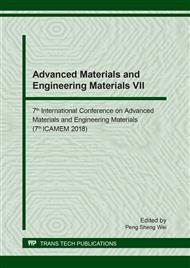p.386
p.393
p.397
p.402
p.411
p.416
p.421
p.426
p.432
Determination of Material Property for Non-Pneumatic Tire Spokes by Inverse Method
Abstract:
The radial spokes of non-pneumatic tire have been developed to absorb impacts. In order to obtain its property for the further developments, it had to cut into the curve beam specimens. The 3-point bending was selected to test referring to ASTM D790. Subsequently, the finite element method was employed to simulate the 3-point bending test of specimens. The inverse method was used to determine the modulus of elasticity for specimen material. The gradient based on optimization scheme was used to optimize the modulus of elasticity by the input and output condition which was the vertical deflection and force, respectively. The optimized process was terminated at the desirable force tolerance of 0.00071 N. The elastic modulus of spoke was implemented in the finite element model of the 3-point bending test. There was found that the simulation result of vertical displacement obtained an average error of 4.87% by comparing with physical experiment.
Info:
Periodical:
Pages:
411-415
Citation:
Online since:
August 2018
Authors:
Price:
Сopyright:
© 2018 Trans Tech Publications Ltd. All Rights Reserved
Share:
Citation:


